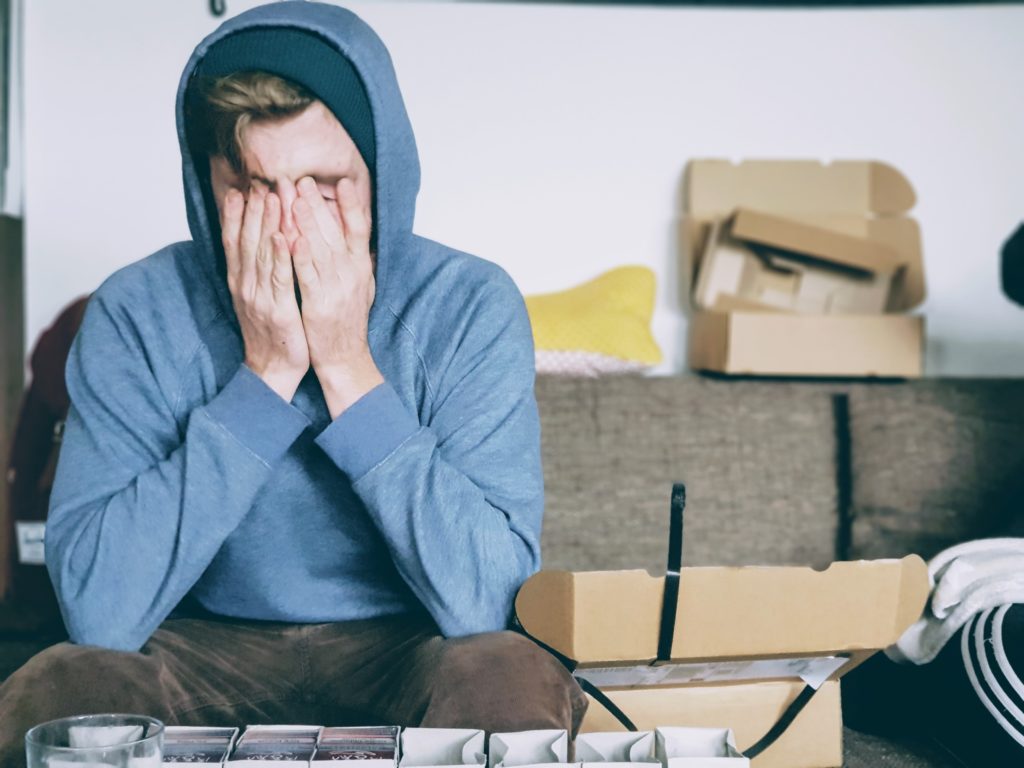Are you amongst the millions of people around the world that have made the dramatic transition to work from home (WFH) during the COVID-19 pandemic? It has been months now and there is still no certainty of when you’ll be able to return to your office. On one hand, you know that being productive while working from home is important. On the other hand, it’s essential to know when to stop working, otherwise, you’re at risk of experiencing WFH burnout.
“Many employees who are working remotely for the first time are likely to struggle to preserve healthy boundaries between their professional and personal lives. To signal their loyalty, devotion, and productivity, they may feel they have to work all the time.”
Laura M. Giurge and Vanessa K. Bohns Harvard Business Review
The risk of WFH burnout is real and consequential. Working from home can be challenging since there’s no longer the fine distinct line that separates your office where you work versus your home which you associate with non-work. Over time, this blurring of boundaries can become hazardous for your emotional, physical and mental health.
In his article, Things to Watch Out for While Working Remotely, author Nermin Hajdarbegovic talks about his personal experience with work from home burnout. I appreciate how Nermin highlights the disastrous effects that can occur when we have limited physical and social contact with our colleagues.
As a result, it is helpful to understand what you can do now so you can conquer WFH burnout.
Burnout defined
The World Health Organization (WHO) has recognized burnout as an official illness. Burnout is defined as feelings of energy depletion on the job, increased mental distance from your job, or reduced professional efficacy.
Although burnout is not considered a medical diagnosis, many medical and mental health professionals find a high correlation between burnout, depression, and anxiety.

Burnout can look and feel differently for each person. Generally, the three most significant factors of burnout include feelings of exhaustion, cynicism, and inefficacy for your job.
It is a serious condition and has a lasting impact on your physical, emotional, and mental health.
In this Ted Talk, Frédéric Meuwly discusses his experience as a burnout survivor. It brought tears to my eyes when he shared that his friend lent him his jacket to get through his first night in the psychiatric hospital. This Ted Talk will explain the red flags to look out for when it comes to personal exhaustion and burnout.
Currently, WFH burnout is impacting numerous employees and is more common than you might think. None of us have ever lived through a pandemic before and no one prepared us for the possibility of experiencing WFH burnout.
Are you having WFH burnout?
How do you know if you’re having WFH burnout or if you’re just tired? How do you differentiate between a rough week at work and real burnout?
AnnaMarie Houlis has been a freelance writer for years and experienced WFH burnout. In her article 7 signs you’re suffering from work-from-home burnout, she provides key indications that you’re suffering from burnout. She points out that if you’re procrastinating, checking your emails religiously and constantly working, then perhaps you are at risk of burnout.

You can also ask yourself the following questions to see if you have WFH burnout:
- Have you become cynical or critical with your work?
- Do you have trouble getting started with work in the morning? Have you become irritable or impatient with co-workers, customers, or clients?
- Do you lack the energy to be consistently productive?
- Do you find it hard to concentrate?
- Do you lack satisfaction from your achievements?
- Do you feel disillusioned about your job?
- Are you using food, drugs, or alcohol to feel better or to simply not feel?
- Have your sleep habits changed?
- Are you troubled by unexplained headaches, stomach or bowel problems, or other physical complaints?
If you answered yes to all or most of these questions, you are likely experiencing WFH burnout.
The best next step is to talk to your doctor or contact a mental health provider. Being proactive about asking and obtaining help will reduce the longterm health implications associated with WFH burnout.
How to prevent WFH burnout
If you answered yes to some, but not all of the questions, then you are at the cusp of WFH burnout. You can take proactive steps now to conquer and prevent full-blown burnout. You can find helpful suggestions in My top 10 tips for working remotely during COVID-19.
1. Maintain physical and social boundaries
The most challenging part of working from home is establishing and following boundaries. These boundaries help you achieve a work-life balance which is key for your overall wellness and self-care.

To set boundaries, you need to learn how to separate your work from your home life, because when those meld together, your brain cannot shut off to rest and relax. As a result, you are constantly “on” and accessible, thereby never stopping your work.
“The lines between work and non-work were already blurred before the current situation. But they’re almost non-existent when your office is your bedroom, kitchen, living room (or even just adjacent to these spaces).”
Jory MacKay 5 ways to fight WFH burnout
Setting boundaries will help you because your work vs non-work time will feel different. Some ways to set boundaries are the following:
Designate and optimize a workspace
Having a dedicated workspace helps you because you naturally go into “work mode” whenever you sit down at your desk.

Your work station should NOT be a space where you usually sleep, relax, and unwind. Therefore, do not use your bed or your couch. Instead, find a space (or multiple spaces) that you can optimize as a temporary office station. Using this dedicated workspace helps you since you can walk away at the end of the day (like you would at your office).
Don’t wear pajamas to work
As tempting as this may be, don’t do this. Wake up, get ready since it prepares your brain to make the shift psychologically from “relaxing at home” to “starting your workday.”

When you’re done with the workday, change into more comfortable clothes, this signals to your brain that you’re done with work and ready for personal time.
Set a cut off time for when you will stop working
You don’t typically stay at your office 24 hours a day, right? You have to treat your home office in the same way.
Set a time every day when you stop working. This helps you avoid blurring the lines between work and personal time.
“The key is to find a balance. Implement office hours by silencing notifications and activating an out-of-office response outside of certain time blocks. This way, no matter if you’re on the road or on the couch, your brain (and your clients or coworkers) knows that it’s time for you to relax.”
Laurel Farrer The Dangerous Reality of WFH Burnout
Communicate to your team and supervisor what your work hours are. Turn off all your work notifications (including email, Slack, and text messages) when you’re no longer on company time. Then stop working.

It will take practice to get into this habit, but you’ll notice a significant improvement in your well-being once you stop working when you reach your cut off time.
2. Take breaks
To avoid WFH burnout, take your breaks! When you’re working in an office, you participate in micro-breaks, like talking to your co-worker about their weekend, or laughing while sharing a joke you heard.
When you’re working remotely from home, these micro-breaks do not exist.
Therefore, you have to make a concerted effort to take your breaks throughout your day. Perhaps you may want to schedule your lunch and rest breaks in your calendar. When you get a notification, stop what you’re doing, step away from your workspace, and take a break.
You can also download an app to help remind you to take your breaks.
Stand Up! The Work Break Timer allows you to customize your preferred break time to your specific work schedule. You can set reminder intervals in increments ranging from five minutes to two hours. And, it even provides a seven-day history so you can see how well you’re doing at taking your regular breaks.

However way you choose to remind yourself to take a break, try to do so away from your workspace.
You can take a walk outside, stretch, meditate for a few minutes. Whatever you do, try to take your break away from technology. Give your eyes and brain a rest.

There are numerous benefits to taking breaks. It allows your prefrontal cortex in your brain a brief respite. You have more energy.
And most importantly, taking breaks increases creativity, motivation, and productivity.
3. Practice self-care daily
Practicing self-care daily will help you conquer WFH burnout by helping you recalibrate every day.
The past few months may have been taxing for you while WFH since you’re now in a new routine and work environment. Perhaps it’s been trying to be around your partner and family all the time, with no place to escape to.
I know that I’ve had a lot of emotional ups and downs while WFH. I’m an extrovert that thrives on social connections, interacting with people in-person and working with a team. WFH during COVID-19 has truly been my personal hell at times because I have been stripped away from a majority of what fuels me.

Practicing these 5 self-care tips daily has given me more energy, clarity, focus, and positivity in my life. I dedicate time every day to invest in self-care because I want to be sustainable and ethical. In addition, I want to enjoy my life, no matter the unusual circumstances we’re living in.
Therefore, doubling down on self-care will make a difference in your mindset and how you feel.
Self-care is the intentional practice of prioritizing your physical, emotional mental, and spiritual health. By practicing self-care daily, you are a more healthy, mindful, and sustainable person.

I love how Emma Drew candidly described her experience of having WFH burnout. In her article Why self-care is important when you work from home she explains her experience with depression and anxiety. In addition, she details how practicing self-care dramatically changed her overall health, well-being, and improved her work productivity.
4. Schedule time off
Taking time off is a great way to combat WFH burnout. Don’t wait until you’re fully experiencing burnout to take time off. Instead, schedule a day or two or even a week and have a mini-vacation.
If you’re not traveling right now due to COVID-19, then plan a staycation. I love the suggestions from Dave Ramsey’s Blog about planning your perfect staycation. Time off from work will help you feel more clarity, positivity, and enthusiasm for your work.

When you’re on your scheduled time off, make sure you unplug and turn off all notifications. Forward your inbox and tasks to a co-worker or virtual assistant.
Practice mindfulness and try your best to not talk or think about work at all. After a few days, you’ll feel recharged and ready for action.
5. Communicate clear expectations
When you are working from home, open communication, transparency and clear expectations regarding your workload will make a monumental difference for your stress level.
In addition, this behavior prevents WFH burnout, because you reduce misunderstandings, build trust, and regain more confidence in your abilities.

Discuss with your supervisor and your team regarding goals, how to track your progress, and the best ways to communicate. In addition, set boundaries by informing your supervisor and team what your work hours are, the best ways to reach you and when you’re going to be offline.
“132 billion business emails are sent every single day. And many of them come in outside of work hours. To protect yourself from WFH burnout, you can’t be beholden to your inbox at all hours of the day.”
Jory MacKay How to avoid WFH burnout
If you’re spread too thin, WFH burnout is likely to happen unless you’re proactive about setting clear boundaries, expectations and openly communicating with your supervisor and team.
These discussions can be stressful sometimes, however, remind yourself that proactively discussing your concerns with your supervisor supersedes the alternative of having WFH burnout and becoming disengaged with your work.
Wrap-up
It’s easy to succumb to WFH burnout since we’re all living with a high level of stress, uncertainty, and anxiety. Many people are spending endless hours working at home since they feel like they have nothing else productive to do.
That is an unhealthy approach to work-life balance. There will always be work to do. However, this precious time that you have been gifted to spend with your family and even with yourself, will not always be there.
As a medical social worker, I have worked closely with people who are at the end of life. I have never met someone who said “I wish I had worked more.” Instead, their biggest regret is that they wish they had worked less and spent more time with their family and loved ones.
I want you to download my free self-care guide so you can practice self-care, set boundaries, and start separating your “work” from “home” during the COVID-19 lockdown.
If you continue to experience a persistent feeling of disinterest, disdain, hopelessness, and fatigue in regards to your work life, then reach out to a medical or mental health provider. Remember that many people are feeling WFH burnout and getting help will reduce the longterm implications for your physical, emotional, and mental health.
What has it been like for you to WFH? What are you doing to conquer WFH burnout? Is there anything that your employer is doing to make WFH easier? Please share your stories and comments below.




2 Responses
These are great tips! Sometimes I forget to take breaks and to practice self-care daily. I don’t even think about self-care, although I know I need it. But thanks for sharing this post. You’ve just reminded me of taking myself better to avoid the burnout while working remotely.
Hi Dory I know exactly what you mean about forgetting to take breaks when working from home. I’ve noticed that when I work at the hospital I’m a lot better about taking my 10 minute breaks and lunch break but when I’m working from home I lose track of time and don’t honor the self-care habits that are instrumental to my health. I’m happy that we’re both reminding each other of the importance of self-care and wellness while working from home.